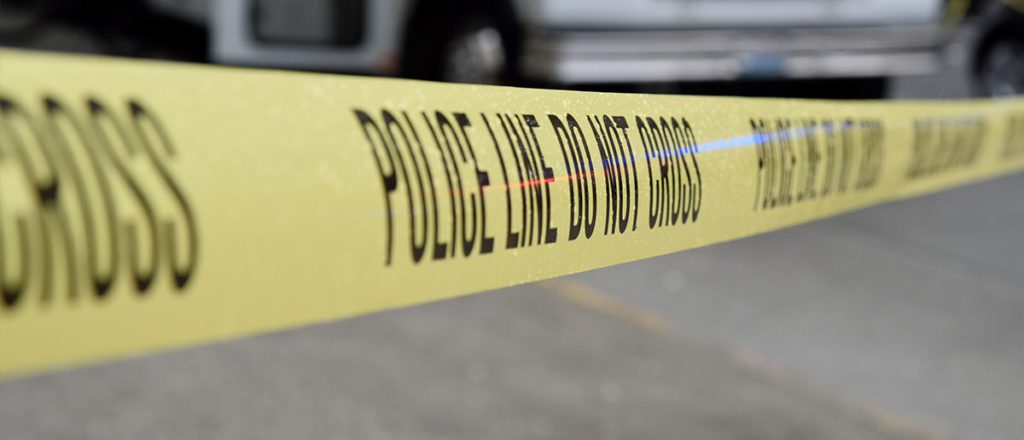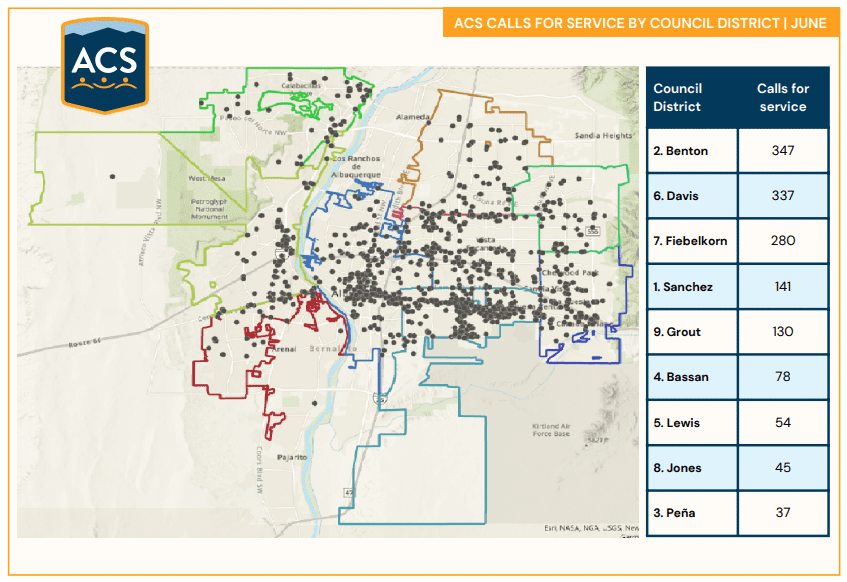Crime is on the rise in Albuquerque, and the far Northeast Heights is no exception. But, compared to the rest of the city, the area is a hold out.
A 2022 Albuquerque area homicides map looks strikingly similar to the Albuquerque Community Safety June 2022 calls for service map. Both show areas in the city south of Interstate 40 riddled with dots indicating where a homicide took place this year or where an ACS call for service took place in June. Both maps (and previous ACS monthly reports) indicate there are fewer calls for service and fewer homicides in the far northeast part of the metro compared to areas south of I-40.
Zoom in or out to see locations of homicides in Albuquerque from January 1 to July 22, 2022. Blue indicates solved and red unsolved homicides. Click on each point for more information. Source: Google Maps.
Albuquerque Police Department’s Northeast Area Command provides monthly statistics for calls for service, but there is no map or breakdown of zones within the area to accompany the statistics, and there is no uniformity in reporting to compare statistics between command areas.
In June, there were a total of 6,998 calls for service in the NEAC, which includes areas north of I-40 and east of Interstate 25 up to Eubank Boulevard. East of Eubank includes areas in the Foothills Area Command. Most of the North Albuquerque Acres and Sandia Heights neighborhoods are not part of the city proper and are serviced by the Bernalillo County Sheriff’s Office. Comparing crime statistics between different parts of the city is not easy, but the tool crimemapping.com does allow one to do so, 1,000 records at a time.
For example, when looking at all incidents reported by APD for the week of July 15-21 in the vicinity between I-25, Paseo Del Norte, Tramway and Montgomery, there were 452 records, with the majority of those being disturbing the peace. Disturbing the peace includes things like traffic stops, suspicious persons and traffic accidents with no injuries.
For comparison, when looking at the same time frame in the area between San Mateo, Candelaria, Tramway and Central, crimemapping.com cannot generate a report because there are more than 1,000 records. Zooming in to a smaller area between San Pedro, Lomas, Eubank and Southern shows 595 records for the area in the same time frame, with the majority reported as disturbing peace but also with a minimum of three assault incidents per day for the week.
Regularly making these comparisons paints a clear picture – the northeast (and northwest) part of Albuquerque does not have the same crime problem as the southeast and southwest parts of the city. Downtown and much of the North Valley have bigger problems too. That doesn’t mean the northeast doesn’t have its issues, or that nothing should be done about it, but it does indicate residents in the area have been spared many of the problems other parts of the city are dealing with, on an almost daily basis.
COVID and crime rates
When looking at city demographics, the far northeast part of Albuquerque tends to be wealthier, healthier and more educated than the southeast and other parts of the city. Correlations between higher education and less crime, or poverty and more crime, are well-documented, but in more recent times, COVID-19 has been blamed for the rise in crime throughout the Duke City.
After talking about growing opportunities and Albuquerque’s “bright horizon” during the June 25 State of the City Address, Mayor Tim Keller said, “Now, we also know it’s no secret that crime casts the longest shadow over our horizon. So much of the progress we made reducing violence was erased by the pandemic.”
The numbers seem to give some credence to the mayor’s claims. Despite the overall crime rate decreasing year over year from 2018-21, crimes against persons, including homicides, increased citywide in that same timeframe. According to APD’s Crime Trends in Albuquerque report, there were 69 reported murders non-negligent in 2018. In 2019, there were 80, and in 2020 that number dropped to 76, but then in 2021 there were a record 116 murders in the city. Between Jan. 1, 2022, and July 22, 2022, APD has reported 71 homicide victims.
The Federal Bureau of Investigation’s Crime Data Explorer does not have Albuquerque’s homicide numbers for 2021 and 2022 and its 2019 and 2020 numbers don’t exactly match the numbers on APD’s report. It does show, however, that there was a jump in the number of reported homicides between 2014 and 2017 and then another increase between 2018 and 2019. Once 2021’s numbers are added, the statistics will show that the greatest increase in the number of homicides from 1985 to the present occurred between 2014 and 2021. In 2014, there were 30 reported homicides, according to the FBI, and in 2021 there were 116 homicides, using APD data. That’s an increase of 86 homicides over an eight-year period.
For comparison, the FBI says there were 45 homicides reported in 1994 and 70 in 1996 – an increase of 25 homicides in a two-year period. Even with the increase in the city’s population, 2021’s number of homicides per 100,000 still ranks the highest, and 2022’s numbers may be even worse. Still, anyone who has taken a statistics class knows that finding a direct correlation between COVID-19 and an increase in crime rates is not as easy as comparing the numbers from before and after the pandemic.
Some researchers hypothesize that the pandemic helped property crimes to go down because of lockdown measures that made residential properties harder targets. Whatever the case, the reason for the increase in crime will continue to be open for debate, and as long as the data remains murky, it will be harder to figure out. What does seem clear, though, is that Albuquerque’s far northeast residents have been spared the brunt of the ongoing crime crisis.



